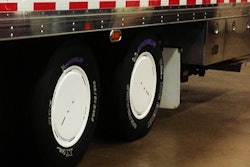
Want to see all the other Overdrive fuel tips? Click here to see them all
30. Analyze your fuel consumption trends.
When miles-per-gallon falls, try to determine why. Did you encounter much more urban driving? Did your length of haul change? As a general rule, drops of more than 0.5 mpg are due to maintenance problems. ECMs can be wildly optimistic, so your actual mileage may be lower than indicated. Validate ECM readings with your own calculations based on the odometer and gallons purchased at fill-up.
31. Isolate data and look for correlations.
The ECM records many things that can affect fuel economy. Look for noticeable changes in average speed, top gear time, idle time, DPF regenerations, shifting and idling. Compare those trends with fuel economy during the same period. You might be surprised at the potential for saving fuel by changing the way you operate.
32. Check your fuel consumption by route.
If you have dedicated runs that can be made via interstate or a shorter route with a lot of stop-and-go traffic, run trials for fuel usage and time to see which is the most efficient.
33. Get an extra set of eyes.
Some technology companies offer services tailored to owner-operators to maximize fuel savings. These companies can monitor engine data and fuel purchases and provide real-time feedback and consulting.
34. Use reefer monitoring systems.
An often overlooked expense is burning excess fuel to cool trailers. Trailer monitoring systems capture the vital information needed to use no more fuel than necessary.
35. Get oil analysis.
The main value of routine analysis is identifying engine problems before they become serious, but some of those problems can affect fuel usage as well.









